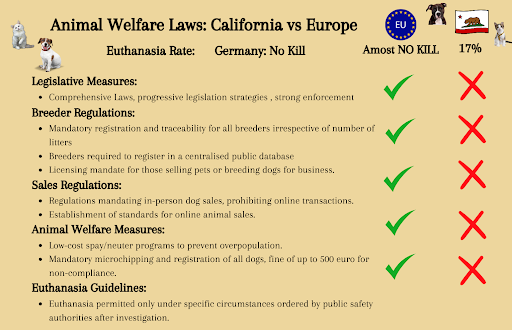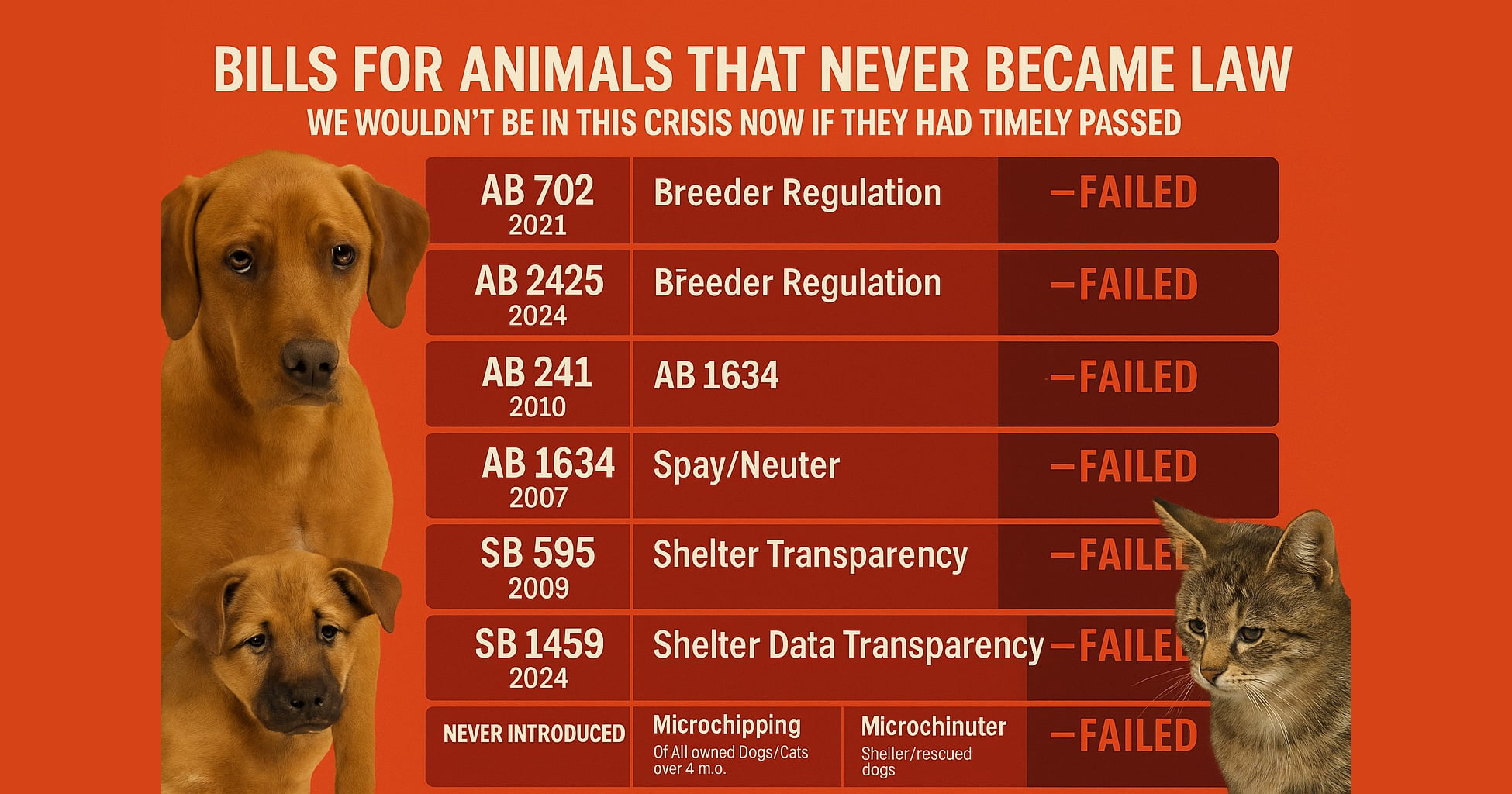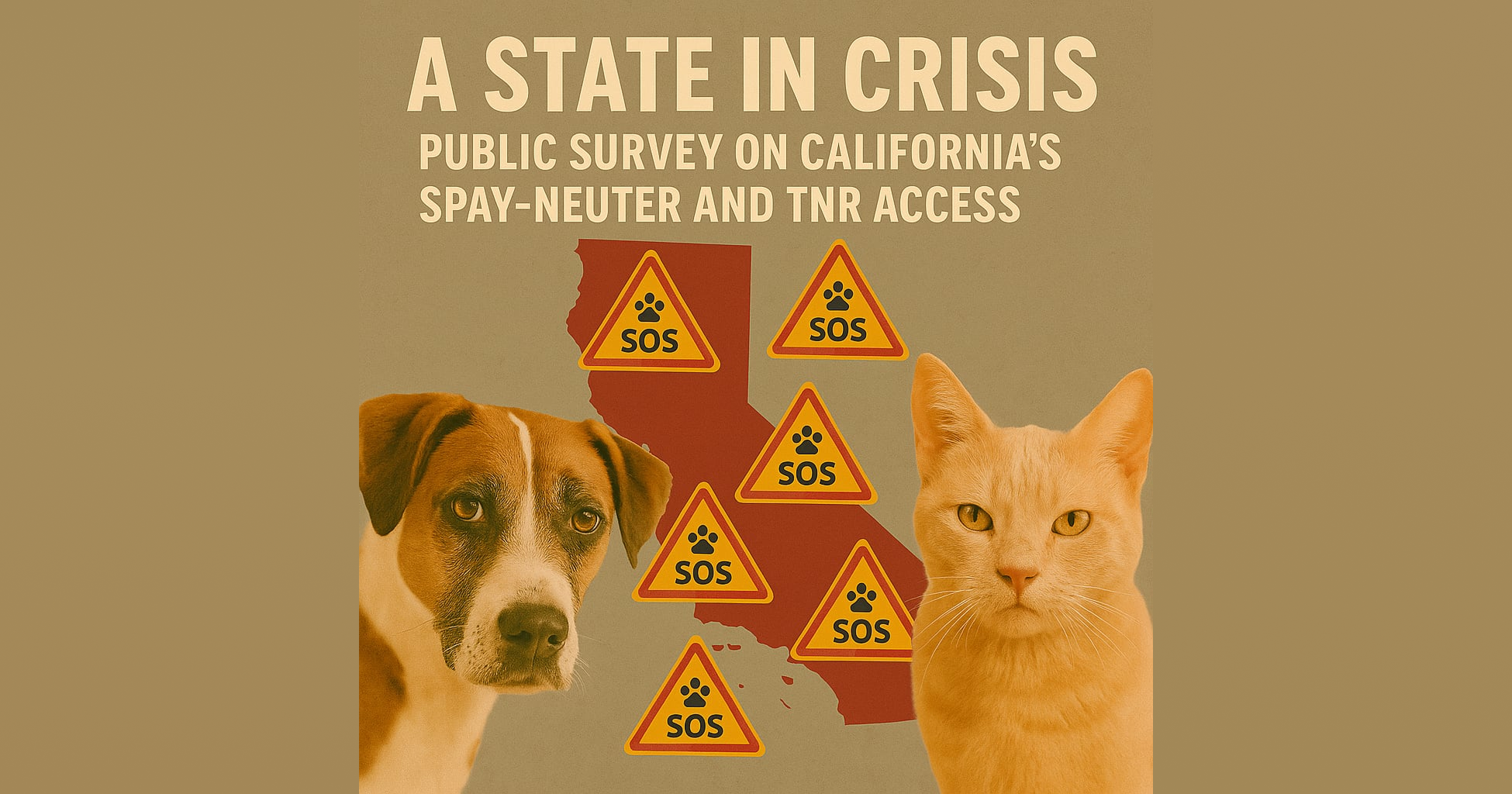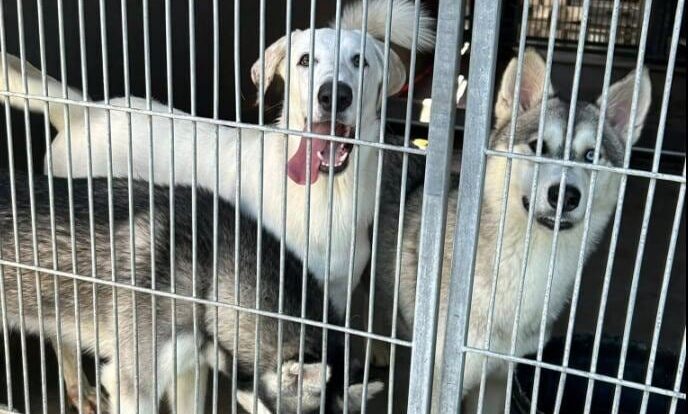The laws and regulations governing animal breeding and selling in the United States and Europe differ significantly due to varying legal frameworks, cultural values, and approaches to animal welfare.
Key Differences
Scope of Legislation: EU laws tend to be more comprehensive and welfare-centric than those in the U.S. In Europe Nationwide Mandatory Animals Identification, Registration, Stricter Breeding and Selling Regulations, Low Cost Spay Neutering support – are traditional and common practices across many EU Countries.
Enforcement and Compliance: European countries generally have more consistent enforcement and higher compliance standards.
As a result, Shelter Euthanasia rates in European countries are significantly lower in comparison to the US.
In the US the overall rate of shelter euthanasia is about 5.6 per 1,000 people, but in the UK, this rate is at 0.2 per 1,000 people. This suggests that the UK has a much lower euthanasia rate compared to the US.
Information if taken from this article from 2018 : Dog Population & Dog Sheltering Trends in the United States of America The Puzzling Geography of Animal Shelter Dog Euthanasia
Here are more facts comparing the US and Europe ( EU):
United States
Federal vs. State Regulations: In the U.S., animal breeding and selling laws are a mix of federal and state regulations. The federal government provides baseline standards, primarily through the Animal Welfare Act (AWA), but states can implement stricter laws.
Animal Welfare Act (AWA): The AWA regulates the treatment of animals in research, exhibition, transport, and by dealers. However, it exempts many types of breeders, including those selling directly to the public (e.g., pet stores) and agricultural animals.
Variability Across States: Laws can vary significantly between states. Some states have strict regulations and licensing requirements for breeders, while others have minimal oversight.
Focus on Commercial Breeders: U.S. laws often focus on large-scale, commercial operations (“puppy mills”) but may overlook smaller, private breeders.
Breeding for Specific Traits: There is less regulation in the U.S. regarding the breeding of animals for specific traits, even if such breeding could lead to health issues in animals (e.g., brachycephalic dog breeds).
European Union
Stricter Regulations: Generally, European countries have stricter regulations on animal breeding and selling. EU directives and regulations provide a baseline, but individual countries often have more stringent laws.
In some Member States breeders are legally required to have proven competency and follow strict practices for welfare and biosecurity.
Focus on Welfare and Ethics: EU legislation tends to emphasize animal welfare and ethics more strongly, including the health and well-being of both parent animals and offspring.
Breeding Restrictions: In many European countries, there are restrictions on breeding practices that could cause harm to animals, such as inbreeding or breeding for extreme physical traits.
Mandatory Registration and Traceability: Many European countries require mandatory registration and traceability systems for breeders and sellers, aiming for more transparency and accountability in the trade.
Pet Passports: The EU has a pet passport system, which includes mandatory microchipping and vaccinations for pets being sold or moved across borders within the European Union.
Key Differences
Scope of Legislation: EU laws tend to be more comprehensive and welfare-centric than those in the U.S.
Enforcement and Compliance: European countries generally have more consistent enforcement and higher compliance standards.
Some Examples from Europe (EU):
Switzerland Extended history of no stray dogs, progression towards strict dog control measures and ownership constraints.
United Kingdom: It is illegal for dogs not to be microchipped unless they have a reason backed up by veterinary proof, such as a Chihuahua puppy being too small to be microchipped. However, as of 2022, it will be a legal requirement for all cats to be microchipped to aid in reuniting and rehoming.
The UK government consulted the general public and concluded that 99% of people support.
Germany: Dogs in Germany have to be licensed. You are required to register your dog at your local citizens’ office. You will need to re-register your dog every time you change your address.
All German animal shelters are practically no-kill shelters. Facilities must be led by a person who is certified in the handling of animals. Most shelters contract veterinarians to provide medical care.
Law Allows euthanasia only if an authority concerned with public safety orders it based on an investigation. https://en.wikipedia.org/wiki/Animal_shelter#Germany
Germany plans stricter Breeders controls: The draft law stipulates that breeders be allowed to look after no more than three bitches with puppies at the same time. There will also be new regulations regarding the size and temperature of whelping boxes.
Slovenia Reported consistently low numbers of stray dogs, progressive legislation and strategies being adopted and recent traceable history of progression
Sweden Traditionally no stray dogs, long history of effective control and responsible dog ownership
Breeders Regulations:
Two thirds of European Union Member Countries require registration of all dog and cat breeders, regardless of number of litters per year, or number of breeding dogs and cats kept.
Whose responsibility is it to microchip a puppy? It’s a dog breeder’s responsibility to ensure puppies are microchipped before selling them. Puppies cannot be sold until they’re eight weeks old, and they must be microchipped before you can buy them.
Breeders must also register their details on the database, and their details will be recorded against the microchip for the life of the dog. A person is considered to be a ‘breeder’ if they’re the owner of a dog that gives birth, whether or not they run a business breeding dogs.
Microchipping and Registration: Almost all EU countries have a nationwide requirement for microchipping of dogs and registration of their microchip number in a database.
Online animals sales: quarter of EU Member States have specific regulation of online advertising of dogs and cats.
Sources:
https://www.dogandcatwelfare.eu/media/publicationtemp/12195_-_EU_Pet_sales_report_spreads.pdf
https://food.ec.europa.eu/system/files/2020-11/aw_platform_plat-conc_guide_dog-breeding.pdf
https://www.dogandcatwelfare.eu/news/eu-dog-cat-alliance-launches-interactive-national/
https://www.hepper.com/uk/animal-shelter-statistics-uk/
https://www.dogandcatwelfare.eu/national-legislation/
https://www.rspca.org.uk/adviceandwelfare/pets/general/microchipping/dogs




